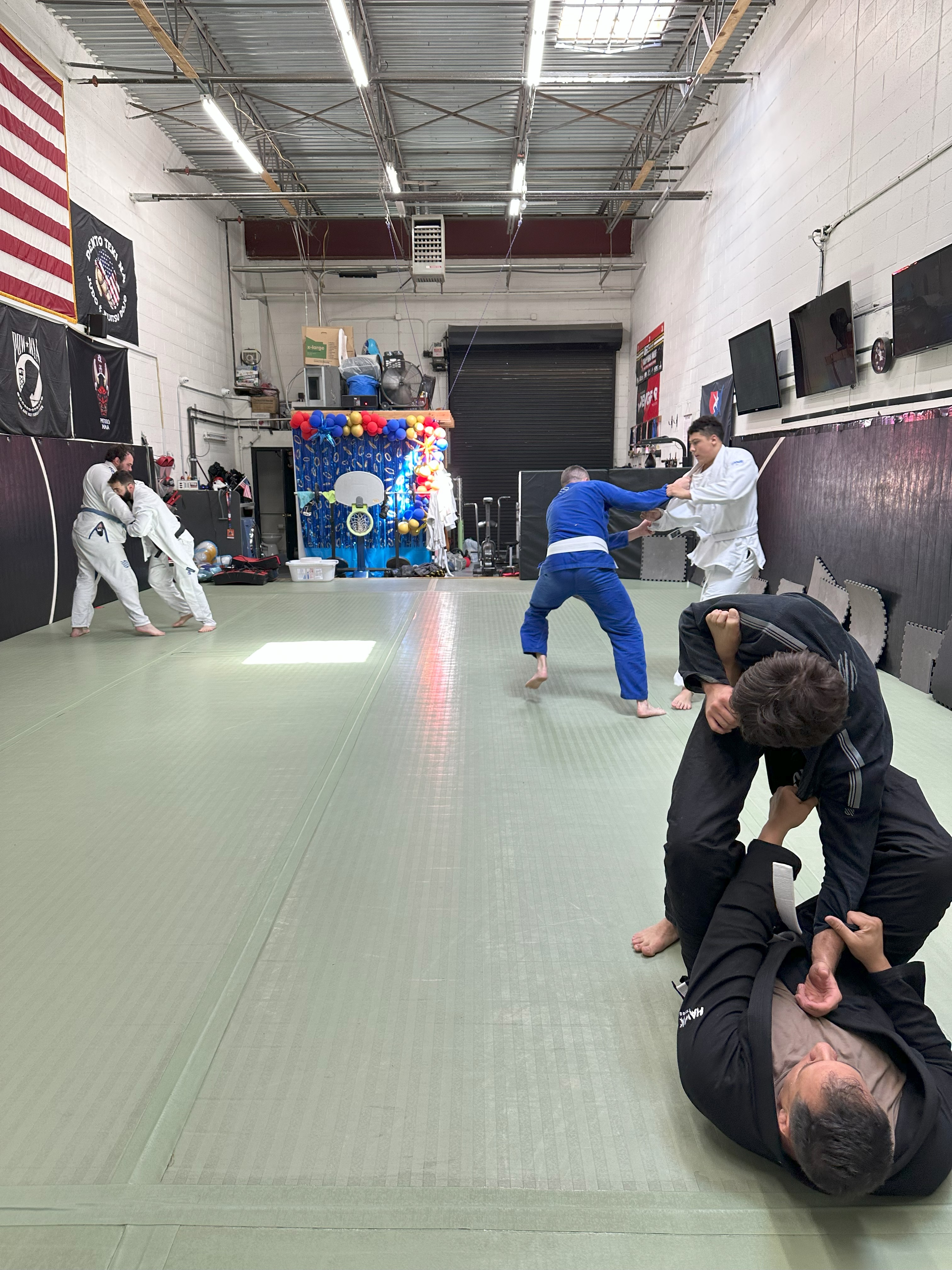

In Brazilian Jiu Jitsu, “the guard” refers to any position where one person is on their back or seated and using their legs to control, distance, or attack their opponent. It’s one of the most important concepts in the art because it allows someone in a seemingly inferior position to defend themselves, sweep, or submit their opponent.
Passing the guard means safely maneuvering around or through your opponent’s legs to establish a dominant position—like side control, mount, or the back. It’s a key milestone in a grappling exchange and often one of the hardest things to do against a skilled guard player.
There are many ways to pass a guard, but most strategies can be categorized into two broad channels: inside passing and outside passing. Let’s take a look at what those mean and how they shape your approach on the mats.
The "inside" and "outside" distinction refers to the path you take around your opponent’s legs.
Both approaches have their place, and many passes combine elements of both. Let’s look at how each path influences your strategy—and how your opponent might respond.
Inside passing puts you in tight contact with your opponent. You’re trying to nullify their legs, compress their space, and work your way through with heavy hips and strong posture. Think of passes like:
Advantages:
Challenges:
Common reactions from the guard player:
Outside passing focuses on staying mobile and elusive. You circle around your opponent’s defenses, preventing them from tying you up or locking in grips. Common passes include:
Advantages:
Challenges:
Common reactions from the guard player:
Most experienced guard passers blend inside and outside techniques. You might start circling on the outside, force your opponent to overcommit with frames, and then shoot into a body lock pass. Or you might fake an inside approach to get them to react and then burst around the legs. Great passing is often about changing rhythm and direction to break through defensive patterns.
The Constraint-Led Approach is a training method that modifies the environment, rules, or available actions to help students discover solutions naturally. These games allow students to focus on specific passing strategies without rigid instruction. I personally try to ensure all my classes have these games built in because I think they're invaluable for skill development.
Rules:
Rules:
Rules:
These are just some basic games to try but you can always add more rules/variables (allow sweeps, standing up, submissions, change the time allowed to score, create a point deficit, etc) if you're more experienced or want more of a challenge. I typically play these games for 2 minutes and then switch top and bottom. If a submission, sweep, or pass occurs, or if a new position is established, reset to the starting position and go again.
Understanding the difference between inside and outside passing isn’t just for advanced students—it’s fundamental to building a complete guard passing game. By training both strategies and learning how your opponent might react, you’ll start to see patterns and feel more confident in your ability to dismantle even the trickiest guards. If you get really good at understanding the concepts that underly guard passing, you'll even be able to pass guards you've never seen before!
The next time you’re sparring, ask yourself: am I trying to go through the legs, or around them? That simple question might open up a whole new path to progress. (Spoiler, these aren't the only two ways to pass a guard, but more on that later.)